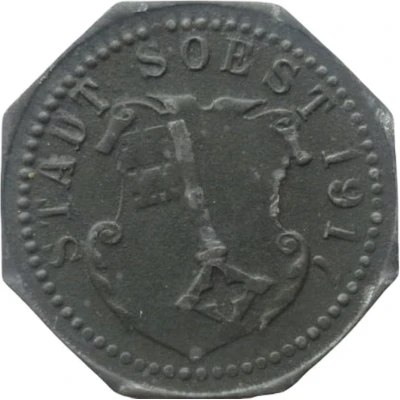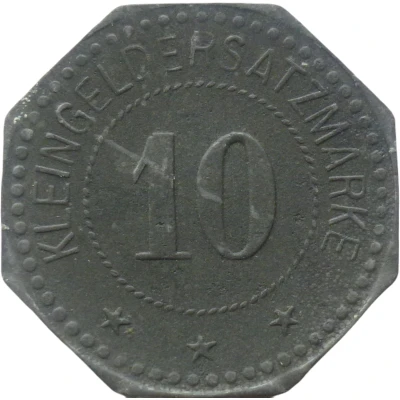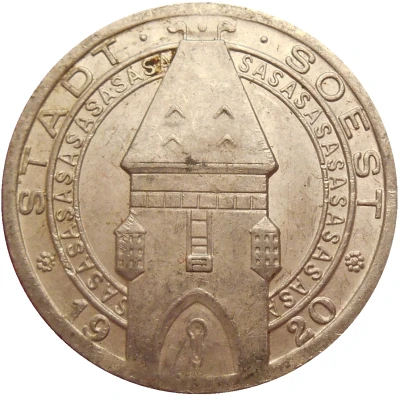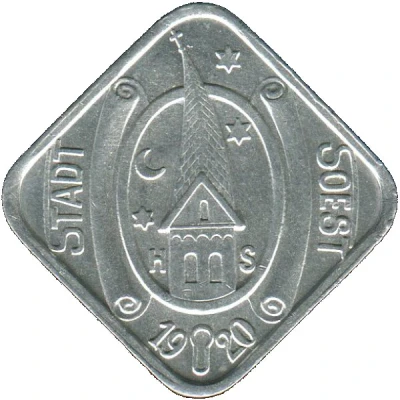
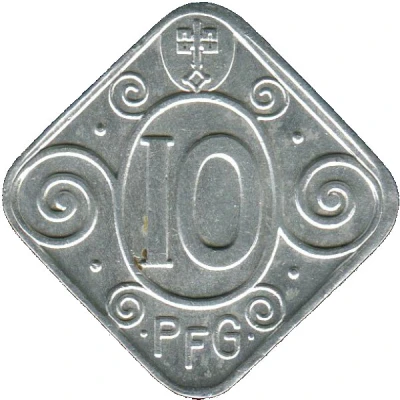

© derfnumismatics
10 Pfennigs - Soest
1920 year| Aluminium | 0.9 g | - |
| Issuer | City of Soest (notgeld) (Prussian province of Westphalia) |
|---|---|
| Period | Weimar Republic (1918-1933) |
| Type | Standard circulation coin |
| Year | 1920 |
| Value | 10 Pfennigs (10 Pfennige) (0.10) |
| Currency | Mark (1914-1924) |
| Composition | Aluminium |
| Weight | 0.9 g |
| Size | 19.2 mm |
| Thickness | 1.2 mm |
| Shape | Square with rounded corners |
| Technique | Milled |
| Orientation | Medal alignment ↑↑ |
| Demonetized | Yes |
| Updated | 2024-10-04 |
| Numista | N#48966 |
|---|---|
| Rarity index | 69% |
Reverse
Denomination within oval surrounded by spiral ornamentation with key center top.
Script: Latin
Lettering:
I0
PFG
Edge
Plain
Comment
Issuing agency: [Stadt, Westfalen].Interesting fact
The 10 Pfennigs - Soest 1920 coin was issued during a time of economic crisis in Germany, specifically during the hyperinflation period of the 1920s. The coin was made of aluminum, which was a relatively new material for coins at the time, and was used as a substitute for the traditional metal coins that were in short supply. The use of aluminum coins was a temporary solution to address the shortage of coins, and they were later replaced by coins made of other materials. This coin is a unique piece of history that reflects the economic challenges faced by Germany during that time period.
